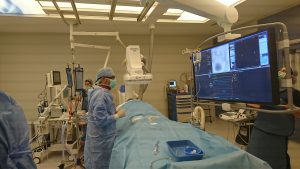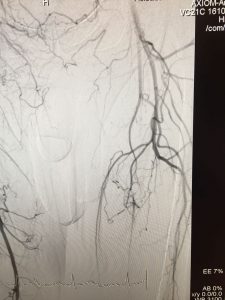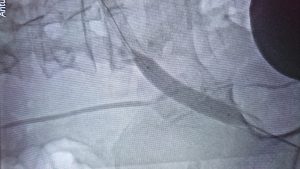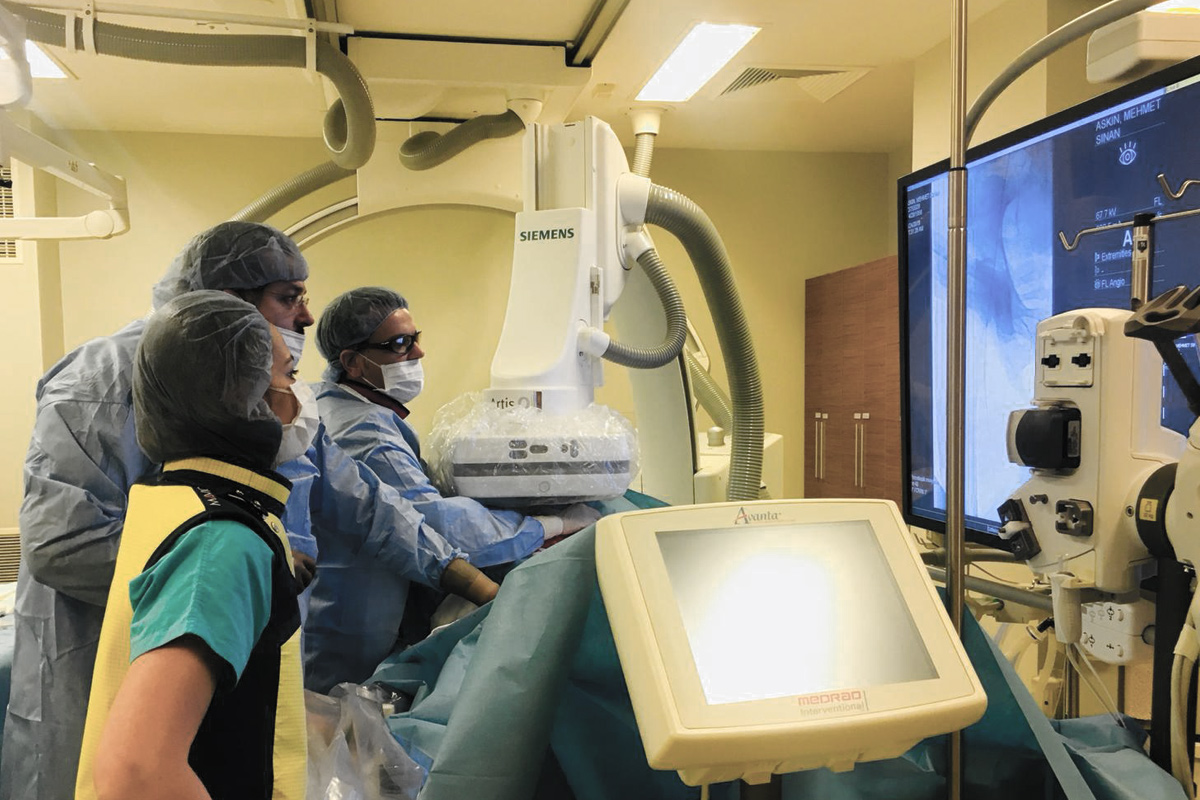Interventional Treatment in Peripheral Vascular Diseases
Management of the Treatment Process
The treatment of peripheral vascular disease should be performed by teams that are experts in the field and who can apply and know well all the techniques in a wide spectrum, from preventive treatments to surgical options. In Europe and the United States there are doctors who work as “vascular specialists and surgeons”, but in our country there is some confusion in the adoption of the treatment of vascular diseases. However, the most correct way today is for cardiovascular surgeons who have been following and treating vascular disease since residency to provide treatment as a team, along with cardiologists and radiologists.
Interventional Methods (Endovascular Procedures)

This is the first-level procedure that should be used in patients with non-healing wounds on the feet and pain at rest, as well as in patients whose legs are to be amputated but for whom attempts are being made to amputate them at a lower level. The choice between interventional methods and surgery is made by evaluating the location and length of the stenosis, the vascular structure, and the general condition of the patient.

All interventional methods are performed in the angiography room under local anesthesia and without incision. The hospital stay and recovery period are shorter than for surgical treatment. However, there is a recurrence risk of stenosis or occlusion in the treated vessels in the early or late phases.
Depending on the location, length, and duration of the occlusion or stenosis, one or more of the following procedures may be used in combination.
• Atherectomy: It is a treatment method based on the principle of aspirating the plaques (calcinosis) formed in the vessels by breaking them up with the help of special catheters. This method is used mainly in cases of vascular occlusion/vascular stenosis below the knee and long vasoconstrictions in the thigh area, as well as in cases of complete occlusion. It may need to be combined with a balloon and/or a stent.
• Balloon angioplasty: this method is effectively used in the treatment of vascular stenosis. It is based on the adhesion to the vessel wall of plaques that cause narrowing of the vessel. It can be performed with medicated or non-medicated balloons. In addition to their mechanical effect, medicated balloons are more effective than non-medicated ones due to the anti-inflammatory effect of the pharmacological agents they create on the vessel wall.

• Stent implantation: this method is used mainly in the arteries above the groin and occasionally in the leg arteries. It is not recommended to be placed in vessels below the knee unless absolutely necessary. There are stents made entirely of metal and stent grafts covered with various materials that are compatible with the body.
Interventional Treatment in Peripheral Artery Diseases
Although it is known before the interventional procedure which of the above methods will be used, the final decision as to which method is necessary and will be used is made during the procedure.
Tags: interventional treatment, angiography, catheter, balloon, stent, atherectomy, thrombolytic therapy, angioplasty, endovascular, percutaneous intervention, vascular occlusion, atherosclerosis

